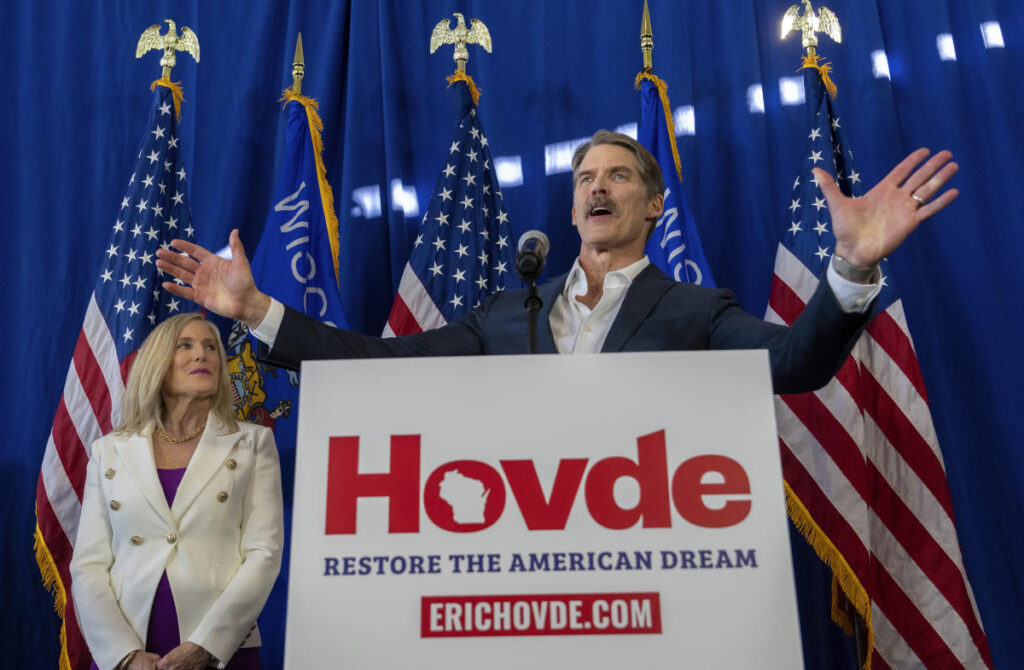In the competitive landscape of the Wisconsin Senate race, Republicans are mobilizing significant financial resources to unseat incumbent Democratic Senator Tammy Baldwin. The dynamic of the race is crucial, not merely for Wisconsin but also for the national political climate, as Democrats aim to maintain control of the Senate. Even as the situation intensifies, Democrats emphasize their existing advantages in campaign spending and voter outreach, maintaining that the tightening of the race was anticipated. A Republican victory, particularly by candidate Eric Hovde, would present serious challenges to the Democrats’ effort to preserve their thin majority in the Senate.
Recent data indicates that Democratic candidates have outspent Republicans in advertising, tallying $93 million against the GOP’s $69 million. Baldwin’s campaign itself accounts for a significant portion of this Democratic spending, while Hovde largely depends on external funding sources. However, approaching the conclusion of the campaign, Republicans have ramped up their advertising, committing an additional $21 million in ads versus the $15 million reserved by Democrats. The Senate Leadership Fund, affiliated with Senator Mitch McConnell, has led the charge with substantial financial bookings. Hovde has expressed confidence in his chances for victory, asserting his focus on the issues that resonate with voters.
Baldwin acknowledges the increasingly competitive nature of the race and has been active in her campaign efforts, teaming up with notable figures such as vice presidential nominee Tim Walz to consolidate support. She believes her ongoing outreach and strong personal connection with voters set her apart from Hovde. Democratic strategists highlight her long-standing political experience and accomplishments, suggesting that these attributes can rally support in her favor amid a challenging political environment. The campaign’s focus on local issues, particularly in relation to farmers and the middle class, is essential to her strategy.
Both campaigns recognize that Wisconsin’s political landscape has historically been highly polarized, often resulting in close races. Baldwin’s previous victories were more decisive; however, the current climate reflects a shift, with Hovde gaining traction among the core Republican base and utilizing significant personal financial investments to amplify his message. Republican analysts point to economic and immigration concerns as critical issues for Hovde to capitalize on in his bid for the Senate seat. The state’s historical voting patterns substantiate the unpredictable nature of its elections, as evidenced by the slim margins in recent contests.
Baldwin’s approach includes leveraging endorsements from influential organizations such as the Wisconsin Farm Bureau, a strategic move aimed to cement her bipartisan credentials. She utilizes her campaign narrative to frame Hovde as an affluent outsider disconnected from the challenges faced by everyday Wisconsinites. Key themes in Democratic messaging emphasize Hovde’s past positions on Social Security and abortion rights, attempting to delineate him as a politician who could jeopardize programs that provide essential support for many voters.
Conversely, Hovde counters Baldwin’s criticisms by framing her as a long-standing politician who has not adequately addressed pressing issues such as economic stability and border security. He has positioned himself as accessible to constituents, focusing on public engagement while criticizing Baldwin for limiting her debate appearances. With the added context of historical trends, if Hovde were to succeed, it could result in a significant political shift in Wisconsin’s Senate representation, marking the first time in over six decades that the state would have two Republican senators. The outcome of this race, amid heightened spending and fervent campaigning from both sides, will be pivotal in shaping the balance of power within the U.S. Senate.

